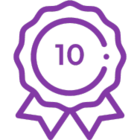Is there a way to report on who is viewing Skuid pages? We are looking to get metrics on which pages are or aren’t being used. Most are hosted on VisualForce pages and SalesForce allows you to report on the view counts per security profile per page. However, I’d like also to get counts and last viewed dates for our pages by specific user. Is that possible?
Thanks!
- Meredith





